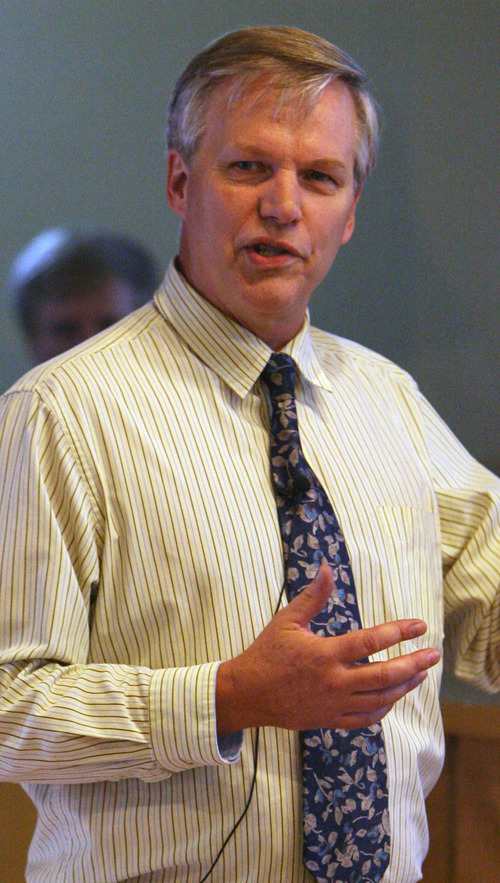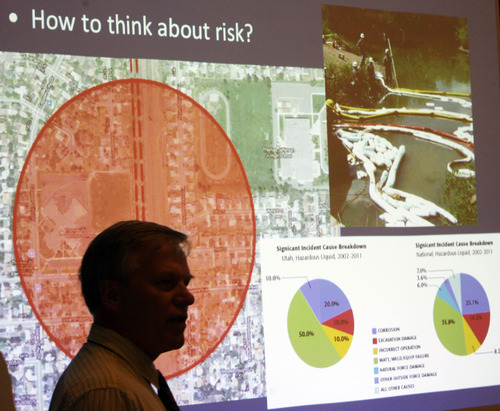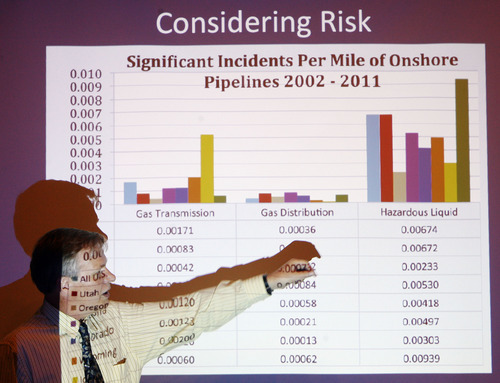This is an archived article that was published on sltrib.com in 2012, and information in the article may be outdated. It is provided only for personal research purposes and may not be reprinted.
The failure of a Chevron pipeline that led to two massive oil spills near Red Butte Creek in 2010 caused tens of millions in environmental and property damage. The question: Can it happen again?
The answer is contained in a 29-page report released Wednesday by the nonprofit, national Pipeline Safety Trust. It was commissioned by Salt Lake City through a $50,000 federal grant.
The conclusion: No one is sure but state and federal regulators could do more to ensure pipeline safety; the oil and gas industries could be more transparent on pipeline operations and inspections; and municipalities could be more strict when zoning for pipelines and training first responders for such events.
"I would like it to be safer," said Carl Weimer, the trust's executive director and study's author. "But maybe Utah doesn't want it to be safer."
In the end, pipeline regulations and safety inspections come down to money, he said. "Somebody has to determine if it's worth it."
The report seeks to inform the public on the kinds and locations of pipelines in the Salt Lake Valley; who operates them; basic safety requirements; and records and risks posed by various pipelines.
It also says the state of Utah has not been aggressive in regulating pipelines.
"Although the federal government is responsible for setting minimum pipeline safety standards, Utah can adopt additional or stricter safety standards," the report states. "To date Utah has not chosen to seek any authority over hazardous liquid pipelines or interstate natural gas pipelines."
The study also finds that Congress could adopt clearer standards for leak detection and ensure that companies provide necessary information to local governments on leaks and spills.
Mayor Ralph Becker said he will take the report to state legislators in hopes of getting new law increasing pipeline safety regulations. In addition, he said, Salt Lake City will work to increase safety measures regarding pipelines and new construction near them.
"The report makes clear we as a community need to take the lead. We cannot rely on the industry or federal regulators," Becker said.
Chevron spent some $42.6 million on spill-related expenses, including $36.6 million in cleanup efforts on Red Butte Creek, $500,000 to Utah, $1 million to Salt Lake City and $3 million for mitigation projects along the creek.
In March, a group of 66 residents living near Red Butte Creek filed suit in federal court against Chevron for unspecified damages relating to property and environmental damage. That suit is still pending.
Read the report
O For the full text of the Chevron pipeline report, go online to slcgov.com/oilspill. —
About the spills
Two leaks from a Chevron pipeline spilled 54,600 gallons of crude oil near Red Butte Garden in Salt Lake City's eastern foothills in 2010.
A June 11-12 spill unleashed 33,600 gallons of crude, scarring Red Butte Creek, the Liberty Park pond and parts of the Jordan River. The pipe was repaired and reopened little more than a week later on June 21.
A second spill, on Dec. 1, spewed 21,000 gallons near Red Butte Garden's amphitheater. The pipeline reopened Feb. 1, 2011, with safety upgrades. The Liberty Park pond, however, didn't reopen until May 14, 2011.







